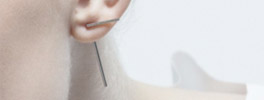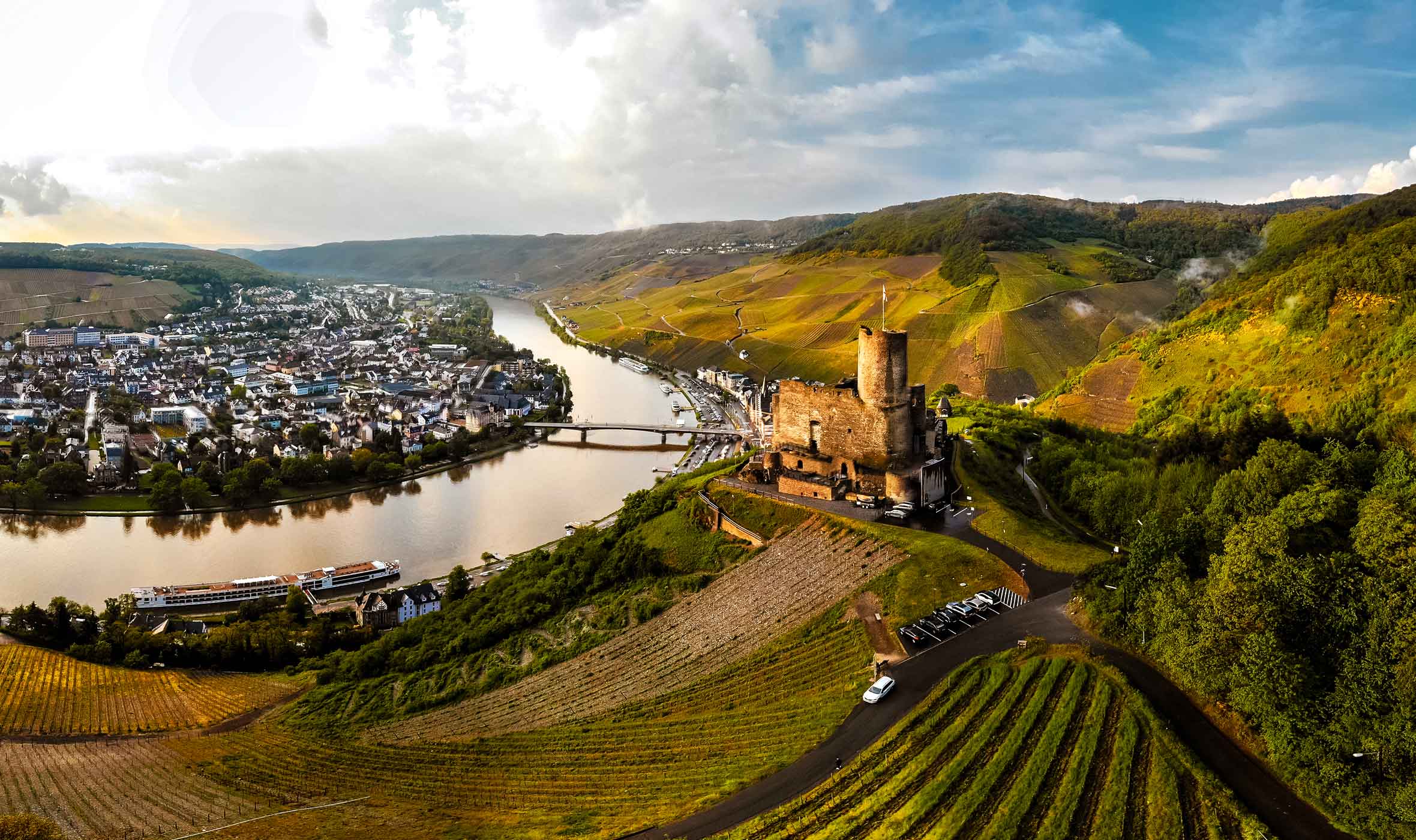
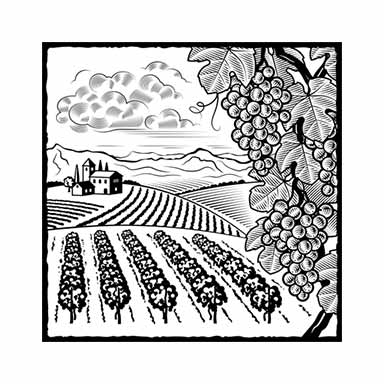
The central Moselle - Region Bernkastel
The Moselle is divided into six areas (Cochem Castle, Bernkastel, Ruwer Valley, Saar, Upper Moselle and Moselle Gate). The Central Moselle is the name given to the Bernkastel area, the approximately 120-kilometre-long section of the Moselle that runs from the city of Trier to Reil above Zell.
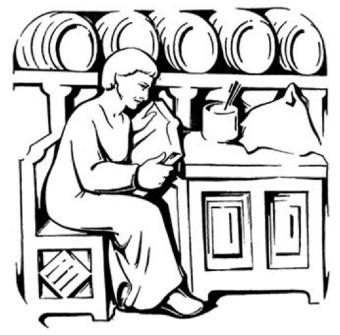
World known wine locations and vineyards
Downstream, a large number of well-known wine villages line the Middle Moselle, including Schweich, Longuich, Mehring (Mosel), Klüsserath, Trittenheim, Neumagen-Dhron, Piesport, Brauneberg-Filzen, Lieser, Bernkastel-Kues, Zeltingen-Rachtig, Ürzig, Kinheim, Kröv, Traben-Trarbach and Reil.
Read MorePremium vineyards in slate steep hills
The area along the central Moselle around Bernkastel-Kues forms the core of the region in which the Moselle makes ten loops, some of which are very narrow. Among the most famous single vineyards of the central Moselle are the Alte Badstube am Doctorberg or the Bernkasteler Doctor, the Brauneberger Juffer and the Brauneberger Juffer Sonnenuhr, the Erdener Prälat, the Zeltinger and the Wehlener Sonnenuhr and the Piesporter Goldtröpfchen.
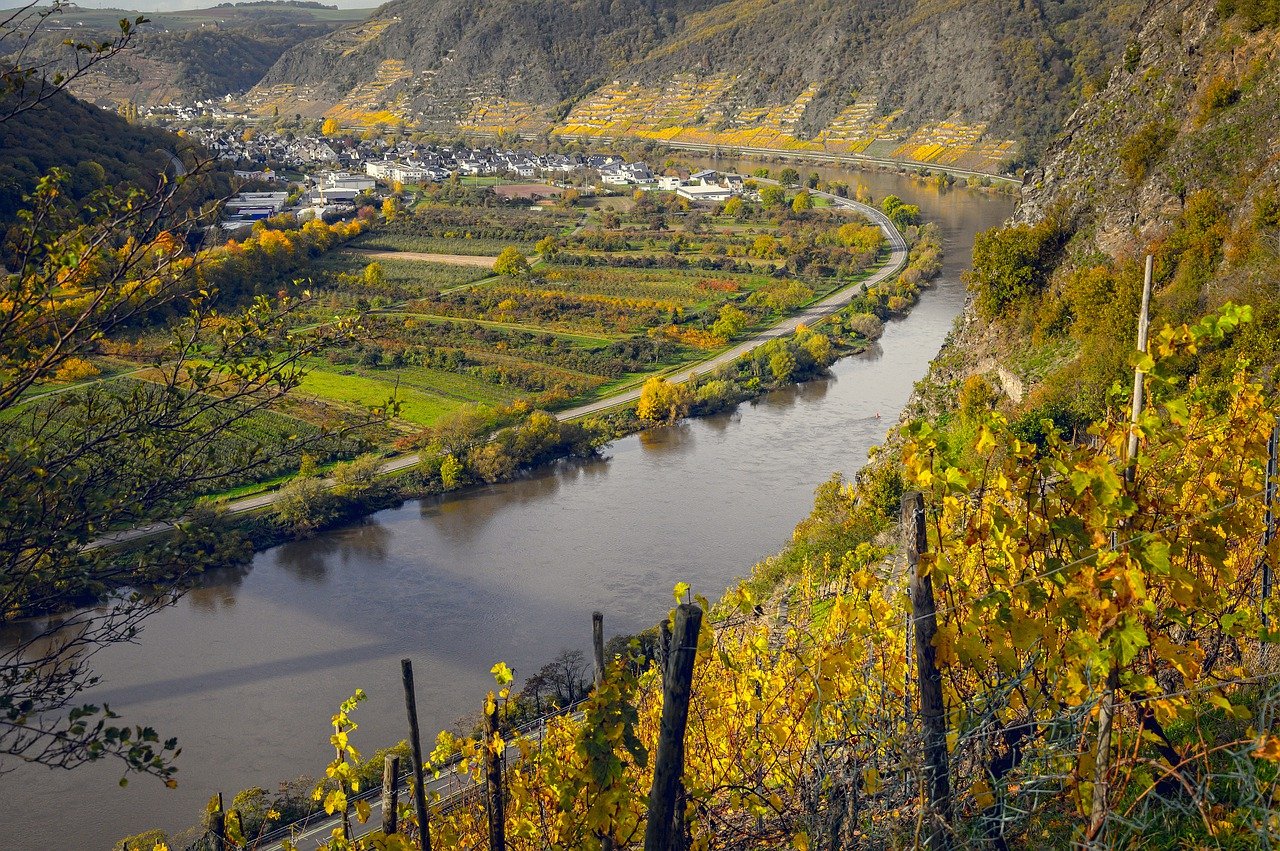
The central Moselle - Heart of the region from Trier to Briedl
Soil and climatic conditions of the middle part of the Moselle
The Middle Moselle is the heart of the wine region. Between Trier and Briedel, most of the vineyards of the wine region are planted on 5,646 hectares of vineyards. The soils on the steep hillsides are largely made up of schist weathering rocks...
The heart of the region
The Middle Moselle, the heart of the wine region, is home to a large number of the wine villages, sloping vineyards and the best-known wine estates of the wine region along its almost 100 kilometers of river. Climatically, viticulture is favored by the protected location of the valley and the heat accumulation of the Moselle. The annual sunshine duration is almost 1,400 hours.
Sufficient rainfall and the forests on the heights ensure a good supply of water for the vineyards. The wines are fruitier and slightly more powerful than those of the Saar and Ruwer. The vines grow on blue, grey and red schist on the steep slopes and on terraced sediments of gravel, sand and clay in the valleys, deposited by the Moselle over the millennia. The soils of the Rotliegend near Ürzig, where the Moselle has met the red volcanic rocks of the Eifel, are a geological speciality.
Top vineyards of the Middle Moselle
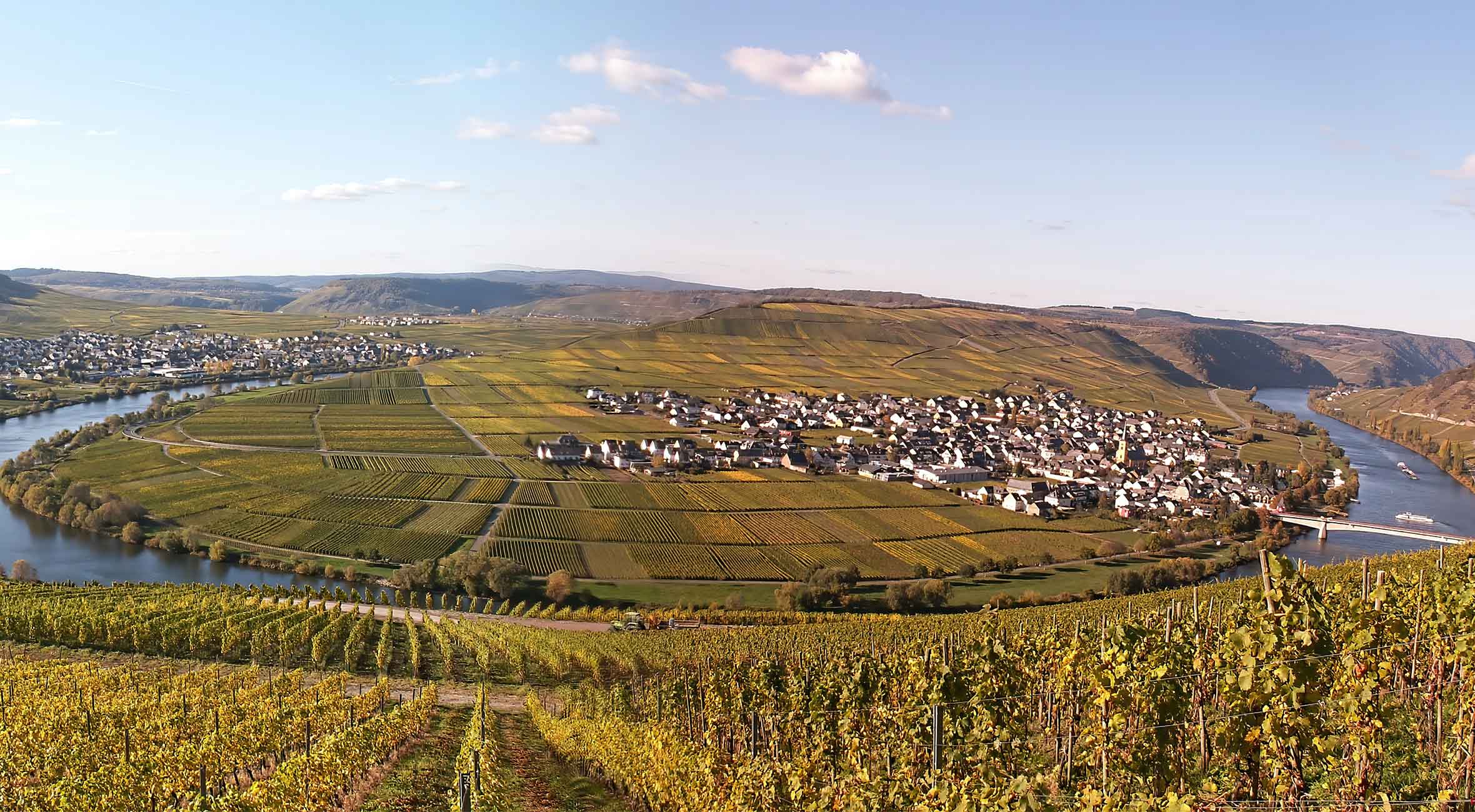
Trittenheimer Apotheke
The top vineyard Trittenheimer Apotheke is located above the wine village Trittenheim on the right bank of the Moselle. The world-famous site is extremely steep at 40-60 percent. The stony soils consist of gray-blue slate - they store the sun's heat from the southwest exposure during the day and allow it to flow back into the vineyard at night.
Our winemakers
-

Nik Weis
-
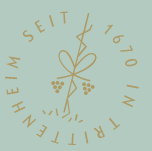
Ansgar Cluesserath
-
F.J. Eifel
-
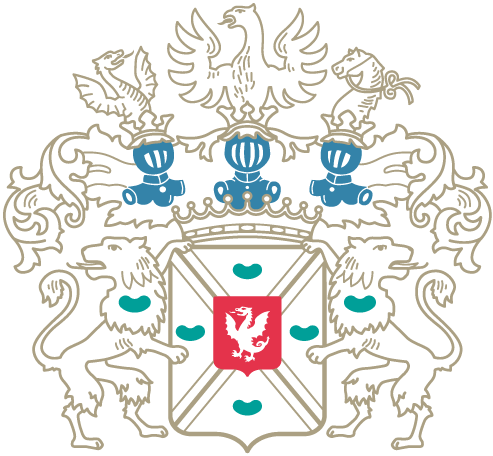
Reichsgraf von Kesselstatt
This gives the Riesling, which grows mainly here, plenty of time to ripen. The vineyard is located between 150 and 200 meters above sea level. It covers 72 hectares. About the history: the name of the vineyard is not, as one might suppose, due to the healing properties of the wines, but is a variation of the name Abteiberg of the foundation of Trier Abbey. Until 1909, the winegrowers had to use a ferry to get to their vineyards. In the core area of the site there is still the ferry rock to which the driving rope was once attached.
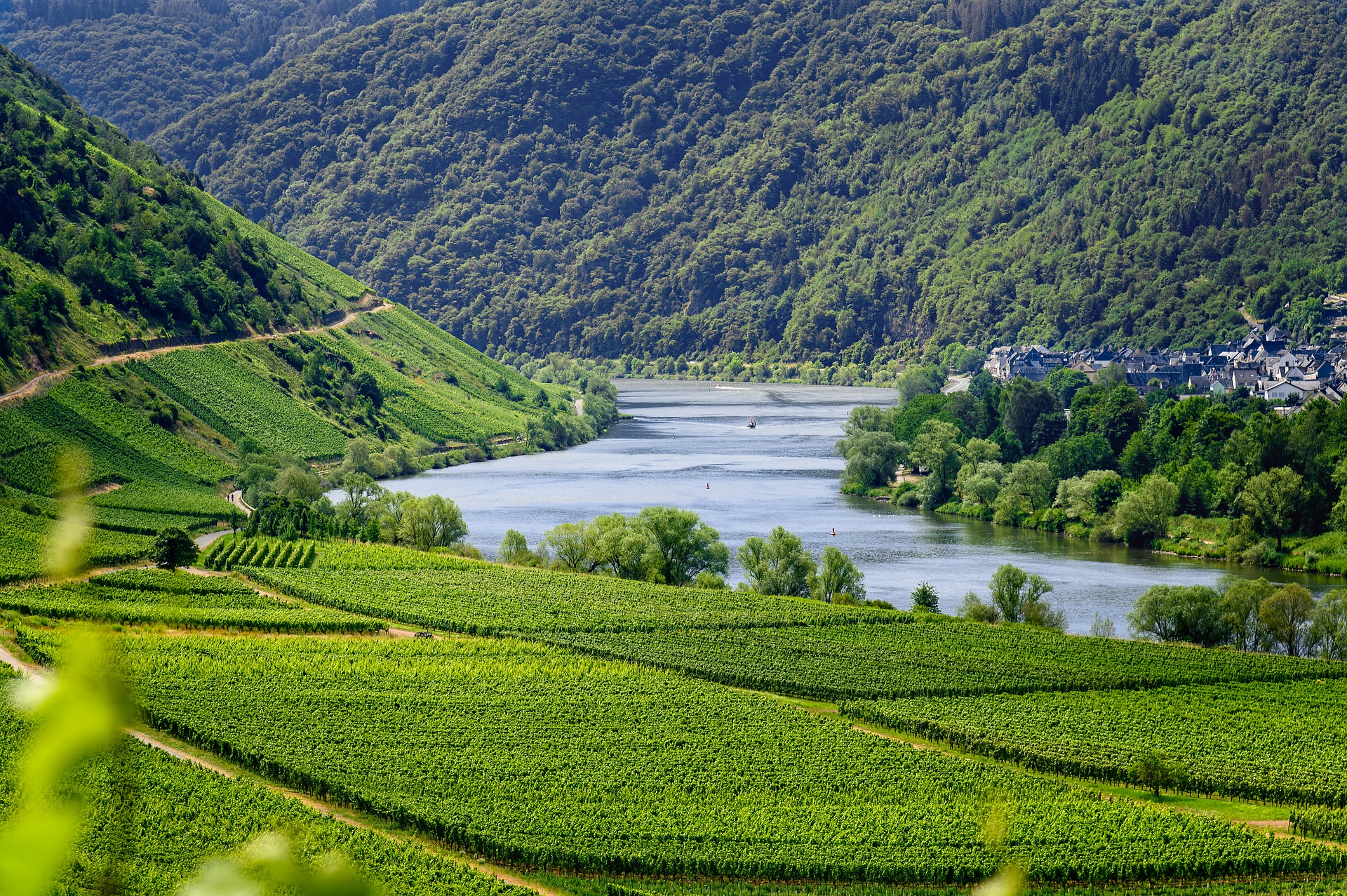
Piesporter Goldtröpfchen
One of the oldest wine villages on the Moselle is the village of Piesport. Even the Romans cultivated wine here. A wine press excavated in 1985 in the middle of the Piesporter Goldtröpfchen (the largest north of the Alps) testifies to this. The Piesport Goldtröpfchen vineyard lies in the U-shaped curve of the Moselle and resembles an open amphitheater. It is a guarantee for the creation of spicy and well-preserved Rieslings.
Our winemakers
-

Hain
-

Nik Weis St.Urbanshof
-

Willi Haag
The 66-hectare site stretches from the Piesport district of Ferres to the Moselloreley in a southeasterly direction. The orientation of the vineyards ensures sufficient sun from summer to late autumn for the growth of the aromatic grapes. The forest above the site provides a good water balance, so that the vines are sufficiently supplied with water even in times of drought.
The terroir of the Piesporter Goldtröpfchen consists of blue-gray Devonian slate and a partially very high percentage of fine soil. The Rieslings from this site are very mineral and develop perfectly over the years.
The wineries that grow their vines in the Piesporter Goldtröpfchen include the Winery Hain, the St. Urbans-Hof and the Reichsgraf von Kesselstatt Winery.
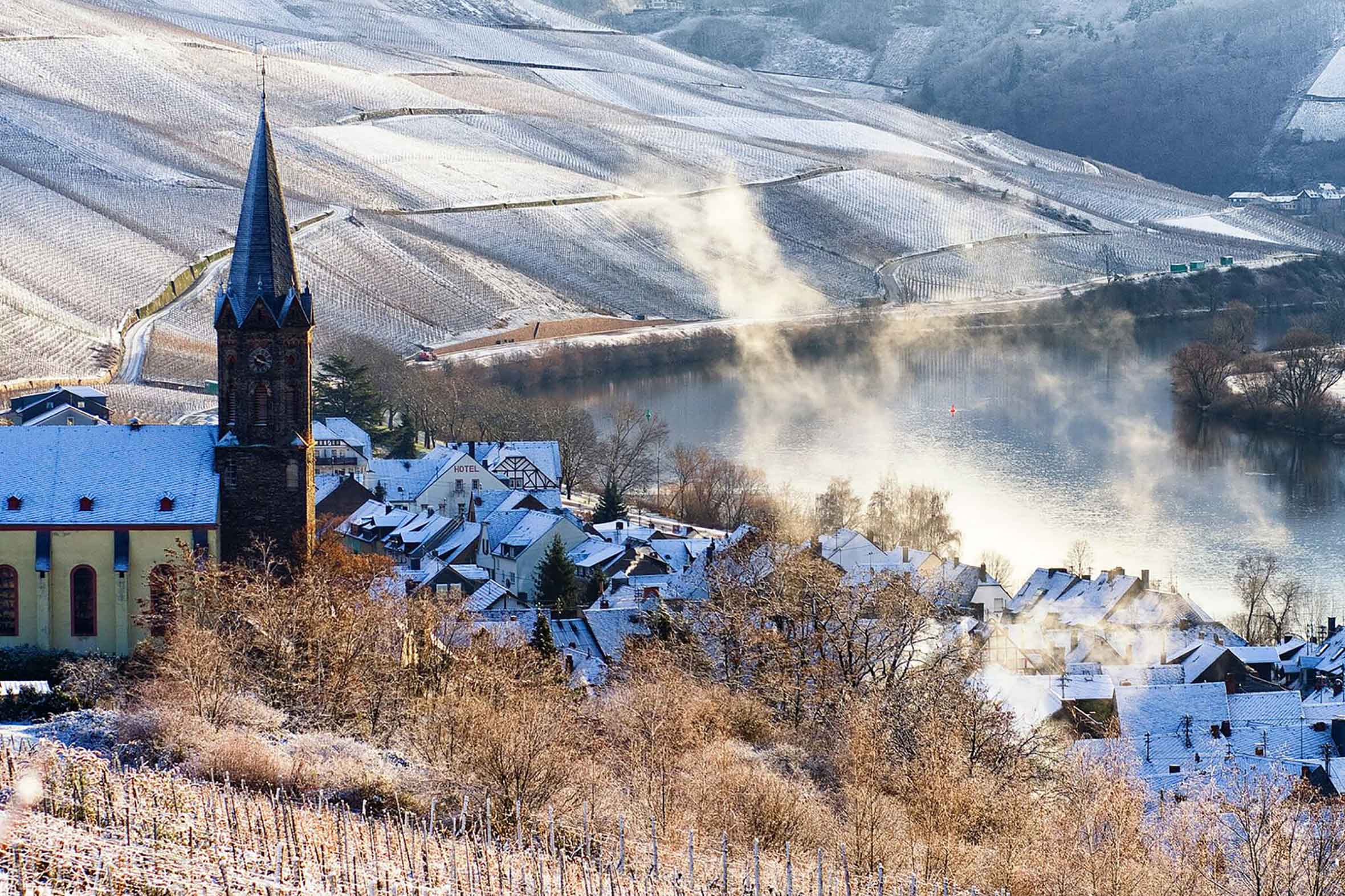
Piesporter Domherr
The Domherr vineyard is a single vineyard in the district of Piesport (Bernkastel area) in the Moselle wine-growing region. It is located directly adjacent to Piesport in the middle of the single vineyard Goldtröpfchen. The south-facing vineyard at an altitude of 120 to 150 meters above sea level with a slope of 30 to 70% covers five hectares of vineyards.
Our winemakers
-

Hain
-

Reichsgraf von Kesselstatt
The stony, deep clay-slate weathered soil is interspersed with quartz and has a high percentage of fine soil. Due to the extensive wooded areas above the steep vineyards, there is an excellent water balance. In the center there is a restored large wine press dating back to Roman times, which is used annually during a large wine festival. Here mainly the Riesling variety is cultivated. Shares have for example the wineries Hain, Reichsgraf von Kesselstatt and Später-Veit.
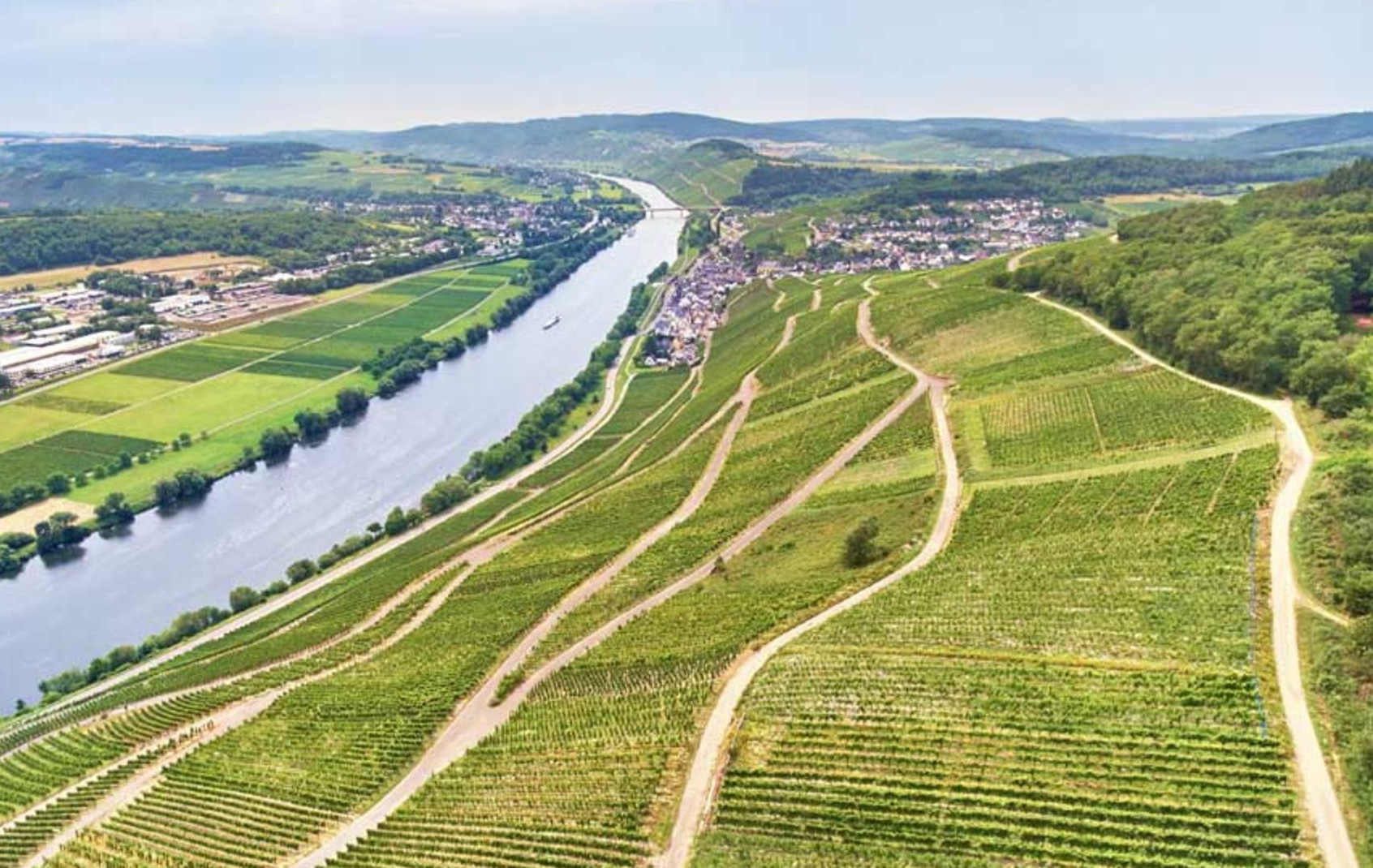
Niederberg-Helden
The Lieser Niederberg-Helden site is the second largest single vineyard in Lieser. The Niederberg is a very steep south-southwest slope with a high proportion of slate. Depending on the stratification in the subsoil, steep slate slopes are either very dry (stratification perpendicular to the direction of the slope) or prone to slipping (stratification in the direction of the slope).
Our winemakers
-
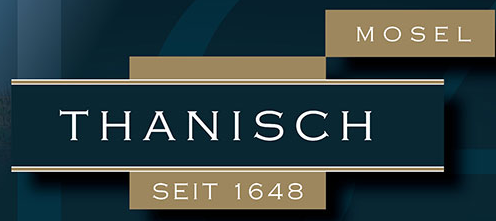
Thanisch
The Niederberg, like the vineyards in Graach, is stratified in the direction of the slope and therefore receives a lot of water from the hinterland. Even in the driest summers, the springs here never dry up, so that the vines never suffer from a lack of water, regardless of the current rainfall. It was created by merging the formerly separate Niederberg and Helden sites. Since 2003, the Süßenberg site has also been included. The south to south-west facing vineyards at 120 to 240 metres above sea level with a slope of 60 to 75% cover 25 hectares of vineyards. The Devonian slate weathered soils have a high percentage of fine soil. The core area is somewhat rounded, creating a sheltered warmth. The climate favours noble sweet wines. Riesling is mainly cultivated here. Shares in the site are held, for example, by the following wineries
.jpg)
Brauneberger Juffer
Brauneberger Juffer Sonnenuhr - Riesling taste at its best
The famous vineyard on the left bank of the Moselle opposite the village of Brauneberg is the home of the Brauneberger Juffer Sonnenuhr. It was known as Dusemond (sweet mountain) until 1925, when it was renamed the Brauneberg vineyard. The terroir, pure slate, is characterised by a fine Devonian slate weathered by weathering, which is constantly "regrowing" from the depths.
Wine estates who produce in this vineyard
-

Thanisch
-
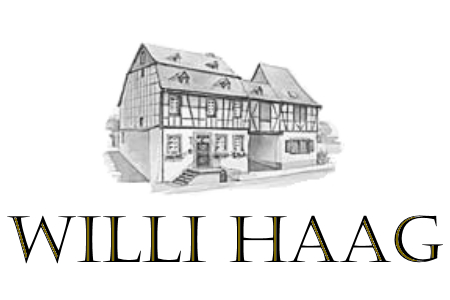
Willi Haag
The Juffer site covers approx. 32 hectares and includes the upper Juffer-Sonnenuhr site with approx. 10.5 hectares, which is situated around the rock of the middle section. With a slope of up to 80% and gentle, vertically undulating valleys, a sustainable microclimate is created here that shapes the wine. On the most beautiful slate soils - sometimes deep, sometimes situated on slate rocks - only the Riesling grape is grown, which gives the wine a great mineral and inimitable potential.
The Brauneberger Juffer Sonnenuhr has been the epitome of Riesling enjoyment at the highest level, from Thomas Jefferson to Theodor Fontane to English royalty. Napoleon already counted the place among the pearls of the Moselle. The name of the vineyard "Juffer" dates back to the beginning of the 18th century. After the Napoleonic occupation, a chamberlain, Wunderlich, owned the largest estate in this vineyard. The chamberlain's three daughters did not follow their parents' wish to marry and remained unmarried. Rather, they devoted their joy and love to the best wines of their parents' vineyard, which grew on the steep rocky slopes of today's "Juffer". Dissatisfied with this development, the parents named these vineyards "Juffer", a girl's name in the Moselle dialect, already during their lifetime in reference to their unmarried daughters.
Particularly fine examples of Riesling wines from the top vineyards of the Brauneberger Juffer Sonnenuhr are those of the Thanisch winery and the Willi Haag winery.
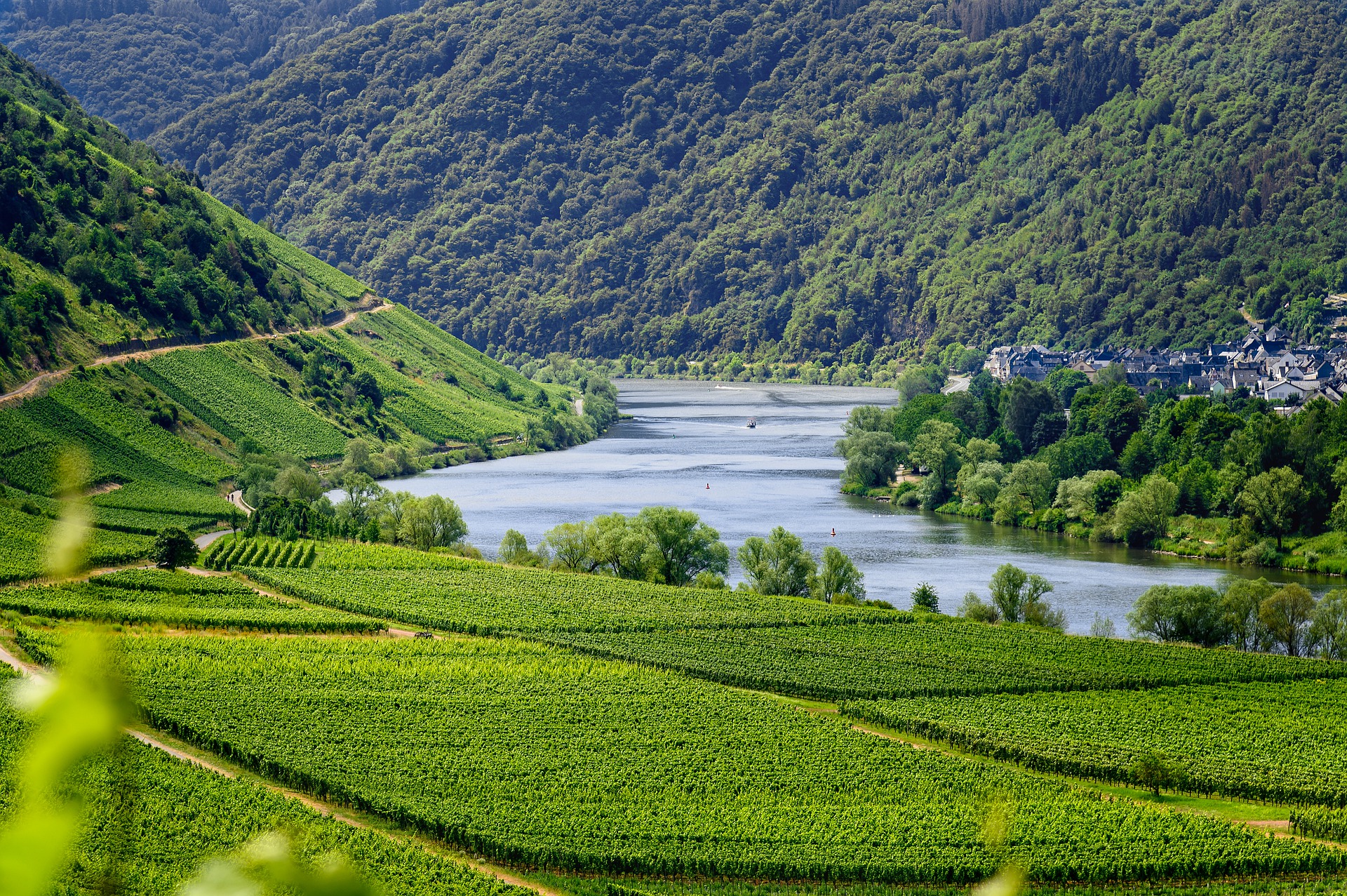
Graacher Domprobst
Graacher Domprobst - The exemplary vineyard of the Middle Moselle
The Graacher Domprobst vineyard is one of the best vineyards in the Middle Moselle. Directly adjacent to the Josephshöfer single vineyard and bordered by the Graacher Himmelreich, Domprobst is the heart of the Graach vineyard. Riesling vines grow here between 130 and 260 metres above sea level, some of which are rootless - the site is predestined for viticulture.
Our winemakers in this area
-
Martin Kerpen
Protected from wind and frost, the grapes continue to benefit from the easily warmed schist soil. Underneath the approximately one-metre-thick layer of shale is a clay terrace that positively influences the water supply of the vines in times of drought.
In the past, one third of the Graach wine tithe was paid to the provost of Trier Cathedral. This is how the estate got its name. The wines produced here are often extraordinarily spicy and aromatic, with impressive minerality and finesse. Riesling in particular, which is very demanding, has exceptional qualities here.
The Markus Molitor, Kerpen, Phillips-Eckstein or Prüm estates produce elegant cabinet wines and intense, aromatic late harvest wines.
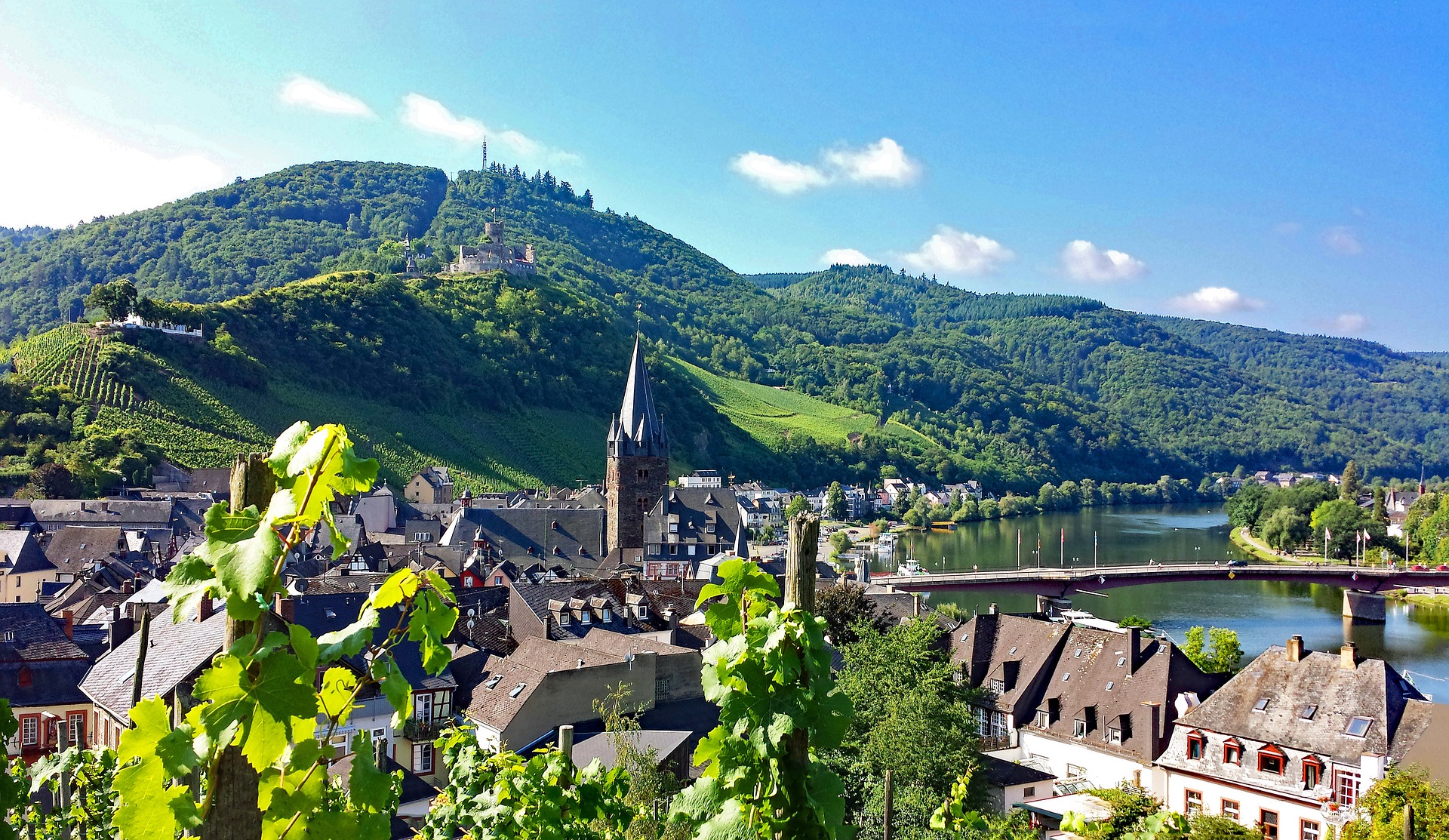
Wehlener Sonnenuhr
Wehlen Sonnenuhr - A true Moselle splendour
One of the most famous wine-growing areas on the Moselle is the Wehlener Sonnenuhr, which belongs to the wine village of Wehlen (a district of the wine town of Bernkastel-Kues). The wines from this site are also famous beyond the German border.
The Wehlen sundial is named after Jodocus Prüm, who in 1842 set up a sundial on the steep slopes of the best vineyard in Wehlen (then called Lammertlay) to show the winegrowers the time. When the highest point above Wehlen is reached in sunshine, the shadow of the needle falls on the 12th parallel.
Our Winemakers
-
Martin Kerpen
The sundial still stands in the vineyard today and is considered a landmark of the town of Wehlen. In 1913, the Wehlen Sundial was first approved as the name for the vineyard, replacing the earlier name Lammertlay.
The Wehlener Sonnenuhr is also known for the fact that the entire site is a steep slope. The vineyards face south/southwest and are located at an altitude of 110 m to 250 m.
Originally, the vineyard area of the Wehlener Sonnenuhr was 8 hectares, but today it has grown to over 45 hectares due to the excellent quality. Riesling is grown here exclusively on stony, grey, Devonian and slate soils. The slate stores the heat of the day and releases it to the vines at night. Sites near the Moselle benefit especially from the reflection of the heat.
The clay soil of the Devonian slate gives the wines their juiciness and minerality. Their racy acidity supports the wines in terms of their storage potential. The wines of the Wehlener Sonnenuhr can be forgotten for several years in a well-tempered cellar and are then a pleasure in their own right.
Furthermore, the soil of the Wehlener Sonnenuhr offers ideal conditions for Kabinett, Spätlese and noble sweet wines. But dry wines from VDP sites can also be made from Rieslings from the Wehlener Sonnenuhr. The wines from the Wehlener Sonnenuhr are elegant, fragrant Rieslings with a fresh acidity. The Rieslings have the aromas of peach and green apple typical of the vineyard.
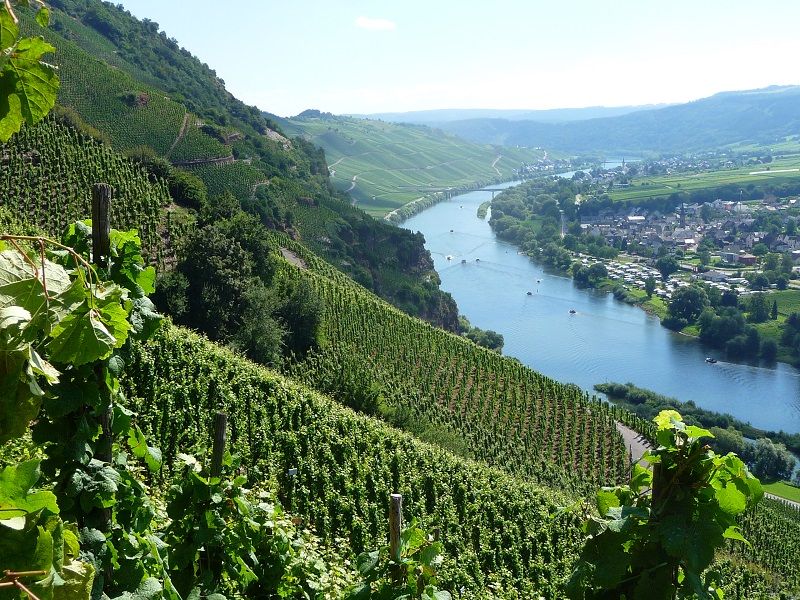
Ürziger Würzgarten
Ürziger Würzgarten - incomparable Rieslings
The Ürziger Würzgarten is considered a special vineyard among the Moselle vineyards. Named after the medieval method of mixing spices with wine, it is now one of the most characteristic vineyards in the Moselle. The 56-hectare vineyard lies between 120 and 320 metres above sea level and has slopes of 35-70% facing south/south-east.
-
Mönchhof
-
Weingut J.J. Christoffel Erben
The soils of the Ürziger Würzgarten consist of red sand and slate. Thanks to its low pH and high iron content (which is also responsible for the red colour of the soil), the Würzgarten produces incomparable Rieslings. The Ürzig Würzgarten is a unique red rock amphitheatre in the Moselle, with a brilliant red colour and an unbelievably steep slope. Although it is located just upstream from the Erden vineyards, the Ürziger Würzgarten produces an entirely different type of great Riesling, with great depth and exotic, spicy aromas. The eroded, schistose red volcanic rock makes the Ürziger Würzgarten so unique in the Moselle. A high iron content in the soil gives this terroir its bright colour.
Their fragrant and spicy bouquet gives the wines their unique character. The Würzgarten in Ürzig produces wines that are completely different from other Mosel Rieslings and impress with their depth.
The Rieslings from the Würzgarten Ürzig have excellent ripening potential.
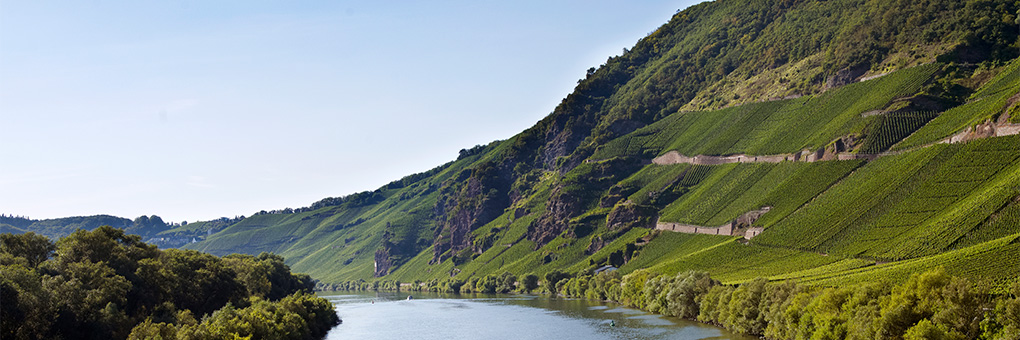
Erdener Treppchen
This vineyard is so steep that stone steps were cut into the slope centuries ago. This was the only way to cultivate the vines in the steep rock formations. This "staircase" gave the vineyard its name. Evidence of winegrowing during the Roman occupation is provided by finds of a winepress dating from the third century AD.
Our Winemakers
-
Mönchhof
-
Joh. Jos. Christoffel Erben
The Roman wine press house is located directly at the foot of the slope of the Erdener Treppchen site, where the Moselle glistens silently. The Treppchen lies on the left bank of the Moselle directly opposite the small wine village of Erden and downstream from the Ürziger Würzgarten, in the immediate vicinity of the Erdener Herzlei.
Thanks to the steeply sloping southern exposure, the vines are pampered by the sun all day long. In the Treppchen, you can find numerous varieties of slate. There is ferruginous reddish slate, grey slate and clay slate. Hard manual labour and untiring diligence are necessary to grow wines of exceptional quality here. The Erdener Treppchen is planted exclusively with Riesling vines. On the steep south-facing slopes with up to 75 percent slope inclination, delicate, rich and deep wines of great elegance and finesse grow.


